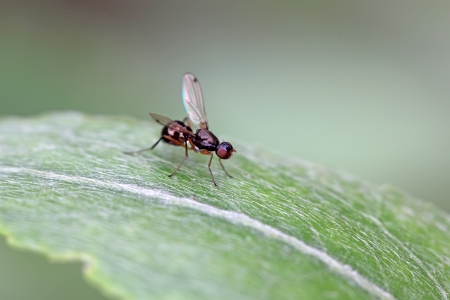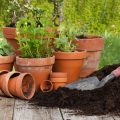1. Understanding Common Flying Insects in the Garden
When spending time in your backyard or tending to your garden, youre likely to encounter a variety of flying insects. Some are helpful pollinators, while others might be pests or even pose a threat due to their sting. In American gardens, the most commonly spotted flying insects include bees, wasps, and flies. Knowing how to tell them apart is essential for both maintaining a healthy garden and staying safe.
Bees
Bees are among the most beneficial insects you’ll find in your garden. They play a critical role in pollination, which helps flowers bloom and fruits develop. There are many types of bees in the U.S., including honey bees, bumblebees, and native solitary bees like mason bees and leafcutter bees.
Common Characteristics of Bees:
- Fuzzy bodies with yellow and black stripes
- Generally non-aggressive unless provoked
- Seen collecting pollen and nectar from flowers
- Nest in hives (honey bees) or underground (bumblebees)
Wasps
Wasps are often mistaken for bees but serve different roles in the ecosystem. While some wasps do contribute to pollination, most are predators that help control pest populations by feeding on insects like caterpillars and aphids. Common types include paper wasps, yellowjackets, and hornets.
Common Characteristics of Wasps:
- Smooth, slender bodies with narrow waists
- Bolder colors—often brighter yellow and black patterns
- More aggressive than bees, especially near nests
- Nest in trees, under eaves, or underground (yellowjackets)
Flies
Flies might not be the first insect that comes to mind when thinking about gardens, but they’re present in nearly every outdoor space. While some are nuisances or even harmful (like houseflies), others like hoverflies and tachinid flies are beneficial because they pollinate plants or prey on garden pests.
Common Characteristics of Flies:
- Two wings instead of four (unlike bees and wasps)
- No stinger—usually harmless to humans
- Mimic appearance of bees or wasps for protection (especially hoverflies)
- Tend to hover or dart around quickly
Quick Comparison Table
| Insect Type | Main Role in Garden | Aggressiveness | Nesting Habits | Key Identifiers |
|---|---|---|---|---|
| Bees | Pollination | Mild (non-aggressive) | Hives, soil, wood cavities | Fuzzy body, pollen baskets on legs |
| Wasps | Pest control & limited pollination | Aggressive when threatened | Papery nests in trees, eaves; ground nests | Smooth body, narrow waist, shiny appearance |
| Flies | Nuisance or beneficial (depends on species) | Non-aggressive | No structured nest; lay eggs in soil or decaying matter | Tiny antennae, two wings only, erratic flight pattern |
This basic overview can help you recognize which flying insects are visiting your garden—and whether theyre friends or foes. In the next section, well explore each group more deeply so you can better understand their specific roles and how to manage them effectively.
2. How to Differentiate Between Bees, Wasps, and Flies
When youre out in the garden, its common to see all kinds of buzzing insects. But knowing whether youre looking at a bee, a wasp, or a fly can help you understand what role theyre playing in your garden—and whether you need to be cautious. Here are some simple tips to tell them apart by observing their physical traits, how they fly, and where they like to build their nests.
Physical Traits
One of the easiest ways to identify these flying insects is by looking closely at their bodies. Heres a quick comparison:
| Insect | Body Shape | Hair | Color | Antennae |
|---|---|---|---|---|
| Bee | Robust and rounded | Fuzzy with visible hair (especially on legs) | Usually yellow and black or brown | Bent or elbowed |
| Wasp | Slender with narrow waist | Smooth with little to no hair | Bright colors like yellow, black, or red | Straight and long |
| Fly | Short and stocky | Smooth body; may mimic bees or wasps | Varies; often duller than bees or wasps | Short and stubby |
Flight Patterns
The way an insect flies can also give you clues about its identity:
- Bees: Steady and purposeful flight as they go from flower to flower collecting pollen.
- Wasps: More erratic and aggressive flying; often hover around food or nesting areas.
- Flies: Quick starts and stops with sudden changes in direction; may hover in place.
Nesting Habits
If you’ve spotted where these insects are coming from or heading to, this can help too:
Common Nesting Sites:
| Insect | Nesting Location |
|---|---|
| Bee (Honeybee & Bumblebee) | Trees, hives, underground burrows, inside walls (honeybees) |
| Wasp (Yellowjacket & Paper Wasp) | Eaves, attics, under decks, underground (yellowjackets), paper nests hanging from branches or buildings (paper wasps) |
| Fly (Hoverfly & Housefly) | No real “nests”; lay eggs in decaying matter, compost piles, or moist soil; hoverflies may be seen near flowers mimicking bees/wasps. |
A Quick Tip for Gardeners
If youre not sure whether youre looking at a bee or a fly, watch the wings: flies only have one pair of wings while bees and wasps have two pairs. Also, flies often have much larger eyes that cover most of their head.
This kind of careful observation can help you avoid disturbing beneficial pollinators like bees while keeping an eye out for more aggressive guests like wasps. Understanding who’s who in your garden helps create a safer and healthier outdoor space for everyone—including your plants!

3. The Role of Bees in Pollination and Ecosystem Health
Bees are some of the most important flying insects you’ll find in your garden. While they may look similar to wasps or flies at a glance, bees play a very different role in nature—and that role is vital. Let’s explore how bees help your garden grow and why its so important to protect them.
How Bees Help with Pollination
Pollination is the process of transferring pollen from one flower to another, allowing plants to produce fruits and seeds. Bees are excellent pollinators because they visit many flowers while collecting nectar and pollen for food. As they move from plant to plant, they spread pollen along the way, helping flowers reproduce.
Why This Matters in Your Garden
If youre growing fruits, vegetables, or flowering plants, bees can dramatically increase your harvest. Without enough pollinators like bees, many crops would struggle to produce anything at all.
Bee Contributions to Crop Yields
In the United States, many crops depend on bee pollination. From apples and blueberries to almonds and cucumbers, bees help farmers grow more food with better quality. Here’s a quick look at some popular crops that benefit from bee activity:
| Crop | Pollination Dependency | Main Pollinators |
|---|---|---|
| Apples | High | Honeybees, Mason Bees |
| Blueberries | Medium to High | Bumblebees |
| Cucumbers | High | Honeybees |
| Almonds | Very High | Honeybees |
Maintaining Biodiversity Through Bee Activity
Beyond food production, bees also support wildflowers and native plants by pollinating them. This helps maintain biodiversity—a healthy mix of plants and animals that work together in an ecosystem. A diverse garden is not only more beautiful but also more resilient against pests and diseases.
The Bigger Picture: Why Bees Matter for Everyone
Bees are essential for sustainable gardening and farming practices. When bee populations decline due to habitat loss, pesticides, or climate change, it affects our entire food system. Supporting bees means planting flowers they love, avoiding harmful chemicals, and creating safe spaces where they can thrive.
Simple Ways You Can Help Bees in Your Garden:
- Plant native flowers that bloom at different times of the year.
- Avoid using chemical pesticides and herbicides.
- Create bee-friendly habitats with nesting areas and water sources.
- Support local beekeepers by buying raw honey or hosting hives.
Caring for bees isnt just good for them—its good for your garden and our planet too.
4. Wasps: Predators, Pests, or Garden Allies?
Wasps often get a bad rap in the garden, mostly because of their sting and aggressive behavior when provoked. But these flying insects are more than just summertime nuisances—they play a variety of roles in the garden ecosystem. Some wasps are beneficial predators that help control pests, while others can become a problem if they build nests too close to your home or favorite outdoor spaces.
Understanding the Different Types of Wasps
In the U.S., there are many species of wasps, but most gardeners will encounter a few common types. Here’s a quick breakdown:
| Type of Wasp | Appearance | Behavior | Common Nesting Areas |
|---|---|---|---|
| Paper Wasps | Slender body, long legs, brown with yellow markings | Mildly aggressive; stings when threatened | Eaves, porch ceilings, branches |
| Yellowjackets | Stocky body, bright yellow and black stripes | Aggressive; scavengers of sugary foods | Underground burrows, wall cavities |
| Mud Daubers | Slim body with narrow waist, black or metallic blue | Solitary; rarely stings | Sheltered areas like sheds or under eaves |
The Good Side: Natural Pest Control
Many wasps are natural predators that feed on caterpillars, aphids, flies, and other garden pests. For example, paper wasps and mud daubers hunt insects to feed their young. This means fewer harmful bugs munching on your tomatoes and roses.
Pest Control Benefits from Wasps:
- Caterpillar Control: Many wasps target soft-bodied larvae like tomato hornworms.
- Aphid Reduction: Some parasitic wasps lay eggs inside aphids, naturally managing populations.
- No Need for Chemicals: Encouraging beneficial wasps can reduce the need for insecticides.
The Risk Factor: Safety Concerns in the Garden
The downside? Wasps can become aggressive—especially yellowjackets—when defending their nests. Their stings are painful and can trigger allergic reactions in some people. If a nest is located near high-traffic areas like patios or doorways, it may need to be removed by a professional.
Tips for Staying Safe Around Wasps:
- Avoid wearing strong perfumes or brightly colored clothing when gardening.
- Keep food and drinks covered during outdoor meals.
- If you spot a nest near your home, don’t disturb it—instead, contact pest control experts.
Create a Balanced Approach in Your Garden
If you want to attract the helpful kinds of wasps while minimizing risk from aggressive species, focus on building a balanced garden environment. Provide flowers for nectar (like yarrow and milkweed), avoid overuse of pesticides, and be mindful of potential nesting sites around your yard. By understanding the different types of wasps and their roles, you can make informed decisions about how to manage them in your garden space.
5. Flies in the Garden: Nuisance or Necessary?
Flies are often seen as unwanted visitors in the garden, but not all of them are harmful. In fact, many types of flies play important roles in maintaining a healthy garden ecosystem. Understanding which flies are pests and which are beneficial can help you make better decisions when managing your outdoor space.
Common Types of Garden Flies
There are several types of flies you might encounter while gardening. Heres a breakdown of the most common ones and how to tell them apart:
| Type of Fly | Appearance | Role in the Garden |
|---|---|---|
| House Flies | Gray, about 1/4 inch long, red eyes | Nuisance; can spread disease |
| Flesh Flies | Striped gray bodies, larger than house flies | Feed on decaying matter; can be unpleasant but help decompose waste |
| Hoverflies (Syrphid Flies) | Look like small bees or wasps; yellow and black markings | Beneficial pollinators; larvae eat aphids and other pests |
| Tachinid Flies | Bristly with large eyes; often gray or black | Parasites of pest insects; good for natural pest control |
| Fruit Flies | Tiny, tan-colored with red eyes | Pests; attracted to overripe fruit and compost bins |
Identifying Beneficial vs. Harmful Flies
The key to telling helpful flies from harmful ones is observing their behavior and where they hang out. Hoverflies, for example, often hover around flowers and mimic bees. Their larvae are great for controlling aphids on vegetables and ornamental plants. On the other hand, fruit flies and house flies usually appear near rotting food or garbage.
Helpful Tips for Managing Garden Flies
- Encourage beneficial flies: Plant native flowers to attract hoverflies and other pollinators.
- Reduce pests: Keep compost bins covered and harvest ripe fruits promptly to avoid attracting fruit flies.
- Avoid pesticides: Many insecticides kill both good and bad insects, disrupting the gardens natural balance.
Did You Know?
Tachinid fly larvae develop inside caterpillars and other pests, helping reduce infestations without any effort from you!
By learning to identify different types of flies in your garden, you can better appreciate their role—or take steps to manage their presence if theyre causing trouble.
6. Safe and Responsible Management of Flying Insects
Managing flying insects in your garden doesnt have to involve harsh chemicals or harmful traps. In fact, using eco-friendly methods can help you maintain a healthy garden while supporting local biodiversity. Heres how you can manage bees, wasps, flies, and other flying insects responsibly.
Encourage Natural Predators
One of the most effective and natural ways to keep flying insect populations in balance is by attracting their predators. Birds, bats, spiders, and beneficial insects like ladybugs and dragonflies feed on flies and other pests.
- Install birdhouses and bat boxes to attract insect-eating species.
- Plant native shrubs and flowers that provide shelter for predatory insects.
- Avoid using pesticides that may harm these helpful creatures.
Use Companion Planting
Certain plants can deter unwanted flying insects while attracting beneficial ones. This method not only helps with pest control but also supports pollinators.
| Plant | Repels | Attracts |
|---|---|---|
| Lavender | Moths, flies | Bees, butterflies |
| Basil | Mosquitoes, houseflies | Pollinators |
| Marigolds | Aphids, whiteflies | Lacewings, hoverflies |
| Dill | – | Parasitic wasps, bees |
Create a Pollinator-Friendly Habitat
Support beneficial flying insects like bees and hoverflies by providing them with food and shelter:
- Choose native flowering plants that bloom throughout the growing season.
- Avoid double-bloom varieties that offer little nectar or pollen.
- Add bee hotels or leave some bare patches of soil for ground-nesting bees.
Avoid Harmful Practices
Certain common gardening practices can unintentionally harm beneficial insects. Here’s what to avoid:
- Pesticides: Even organic options can impact non-target species. Use them only as a last resort.
- Zappers: Bug zappers kill many harmless or beneficial insects along with pests.
- Over-cleaning: Leaving some leaf litter or dead wood provides habitat for overwintering pollinators.
Monitor and Identify Before Taking Action
Not all flying insects are harmful. Before acting, take time to observe their behavior:
- Are they pollinating flowers? They’re likely beneficial.
- Are they swarming near trash or compost? These might be nuisance flies you can manage by improving sanitation.
- If youre unsure about an insects role, consider consulting local extension services or using an ID app before making decisions.
Quick Tips for Eco-Friendly Insect Management
- Water early in the day to avoid attracting flies to moist areas overnight.
- Compost properly to reduce fly breeding grounds.
- Avoid sugary drinks or pet food left outside which can attract wasps and flies.
By following these safe and responsible practices, you’ll create a garden that supports helpful insects while gently managing those that cause problems—keeping your outdoor space vibrant and balanced.


